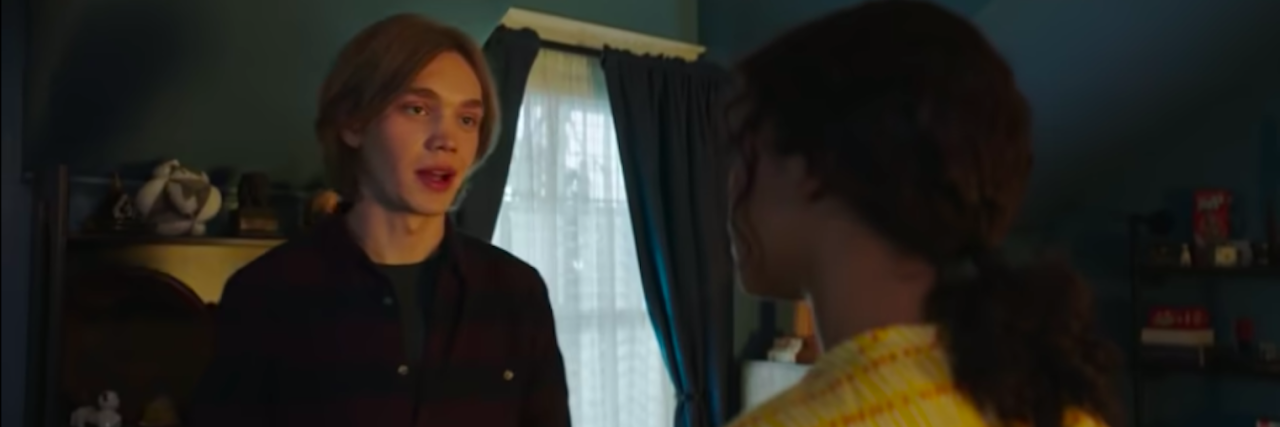Rom-Com 'Words on Bathroom Walls' Shows Schizophrenia In a Different Light
What happened: A new movie is highlighting what it’s really like to live with schizophrenia. “Words on Bathroom Walls” is in theaters now, and the film — based on Julia Walton’s book about a teenager struggling with mental illness — may be the film those living with the condition have been waiting for. Why? Because the film doesn’t glorify mental illness. It doesn’t romanticize it, and the film’s protagonist isn’t portrayed as deranged, violent or crazy.
The film follows Adam (Charlie Plummer) and Maya (Taylor Russell). Adam was recently diagnosed with schizophrenia after a breakdown at school. As he tries to finish high school and enroll in culinary school, Adam meets Maya. From there, the romantic sparks fly as Adam also navigates what it means to have a mental illness. So far, reviewers have praised the film for its non-stigmatizing portrayal of schizophrenia.
“It’s a hard disorder to understand if you don’t have it,” Mike McGranaghan of The Aisle Seat wrote, adding:
‘Words on Bathroom Walls’ delves into that via the friendship between Adam and Maya. … The movie puts their rapport under a microscope, showing the ways, big and small, that mental health issues add challenges to forming connections. More importantly, it shows that those same issues don’t preclude one from having solid relationships. That’s such a vital message for the young target audience to hear.
The Frontlines: Schizophrenia is one of the most misunderstood and stigmatized mental illnesses. Its common symptoms may include hallucinations or delusions, disorganized speech, minimal expression of emotions and difficulties with everyday tasks. These symptoms often get conflated with danger or violence, and media representations of the condition don’t help.
- A analysis published in 2012 examined 41 movies that included 42 characters with schizophrenia between 1990 and 2010, most of whom were male
- Of these characters, researchers found 35 were depicted as being violent toward others and shown self-harming or dying by suicide at higher rates that in reality
- The researchers also noted that Black people have much higher rates of schizophrenia than white people, while only two of the characters in film were Black
Get more on mental health: Sign up for our weekly newsletter.
A Mighty Voice: Our contributor, Jane Alexander, shared her story with us and the realities of living with schizophrenia. “Schizophrenia is a chemical imbalance. Yes, symptoms are often triggered by external events like not getting enough sleep, stress or big life changes. But, then there are other days when I wake up and it’s noisy in my head for no reason I can pinpoint. This is frustrating enough, and even more so when you ask me what’s wrong… but it doesn’t mean my experience is any less real, or less hard.” You can submit your first-person story, too.
Add your voice:
Other things to know: To better understand the experiences of those living with schizophrenia, it is best to hear about their diagnosis in their words. Read on for more information:
- 11 Things Everyone Gets Wrong About Schizophrenia
- 9 Things I’d Like You to Understand About Schizophrenia
- The Reality of Living With ‘High-Functioning’ Schizophrenia
- 18 Things People Don’t Realize You’re Doing Because You Have Schizophrenia
Where to watch: To learn more about “Words on Bathroom Walls” and to find a screening in your area, visit the film’s official IMDB page. You can watch the trailer below.
Header image screenshot via YouTube


